CrossAsia Talks: Diana Lange 17. November 2022
(See English below)
Am 17. November ab 18 Uhr wird Frau Dr. Diana Lange im Simon Bolivar-Saal (Potsdamer Straße 33, 10785 Berlin) im Rahmen ihres Vortrages „Putting Tibet on the Map: A Journey Through Different Mapping Practices“ einen Einblick in ihr aktuelles Forschungsprojekt Maps as Knowledge Resources and Mapmaking as Process: The Case of the Mapping of Tibet geben.
By taking a look at Tibet, it becomes particularly clear how much mapping processes can vary from culture to culture and just how different mapmakers’ interests can be. Depictions of Tibet vary, depending on what perspective was employed. The contrast between indigenous, Chinese and European points of view is striking here. In very simplified terms it can be stated that maps of Tibet made by Europeans look very abstract, maps made by the Chinese way look more pictorial but also include abstract elements and maps made by the Tibetans look like living landscapes. Based on selected geographical maps of Tibet that have been produced over the years by different agents, for different reasons, with different techniques and from different materials Diana Lange will to discuss in her talk how spatial information of a specific region was conveyed in different “cartographic languages” and how these different languages influenced each other. Amongst these maps are three newly discovered bilingual manuscript maps from the State Library of Berlin.
Die Vortragssprache ist Englisch. Wir bitten Sie um Voranmeldung für den Vortrag unter: ostasienabt@sbb.spk-berlin.de und eine kurze Mitteilung falls Sie einen barrierefreien Zugang benötigen. Die Veranstaltung wird gefilmt.*
Der Vortrag wird darüber hinaus via Webex gestreamt und aufgezeichnet. Sie können am Vortrag über Ihren Browser ohne Installation einer Software teilnehmen. Klicken Sie dazu unten auf „Zum Vortrag“, folgen dem Link „Über Browser teilnehmen“ und geben Ihren Namen ein.
Alle bislang angekündigten Vorträge finden Sie hier. Die weiteren Termine kündigen wir in unserem Blog und auf unserem Twitteraccount an.
—
On 17 November at 6 pm in the Simon Bolivar-Saal (Potsdamer Straße 33, 10785 Berlin), Dr. Diana Lange will give a lecture entitled Putting Tibet on the Map: A Journey Through Different Mapping Practices, she will give an insight into her current research project Maps as Knowledge Resources and Mapmaking as Process: The Case of the Mapping of Tibet.
By taking a look at Tibet, it becomes particularly clear how much mapping processes can vary from culture to culture and just how different mapmakers’ interests can be. Depictions of Tibet vary, depending on what perspective was employed. The contrast between indigenous, Chinese and European points of view is striking here. In very simplified terms it can be stated that maps of Tibet made by Europeans look very abstract, maps made by the Chinese way look more pictorial but also include abstract elements and maps made by the Tibetans look like living landscapes. Based on selected geographical maps of Tibet that have been produced over the years by different agents, for different reasons, with different techniques and from different materials Diana Lange will to discuss in her talk how spatial information of a specific region was conveyed in different “cartographic languages” and how these different languages influenced each other. Amongst these maps are three newly discovered bilingual manuscript maps from the State Library of Berlin.
The lecture will be held in English. We kindly ask you to register in advance at: ostasienabt@sbb.spk-berlin.de, and to let us know if you need barrier-free access. The event will be filmed.*
The lecture will also be streamed and recorded via Webex. You can take part in the lecture using your browser without having to install a special software. Please click on the respective button “To the lecture” below, follow the link “join via browser” (“über Browser teilnehmen”), and enter your name.
You can find all previously announced lectures here. We will announce further dates in our blog and on Twitter.

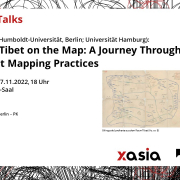

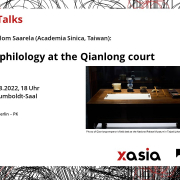 SBB-PK
SBB-PK
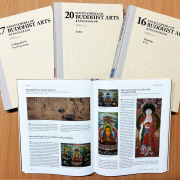
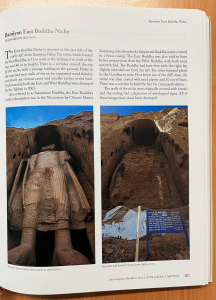 Der zeitliche Rahmen beginnt mit der Tang-Zeit des 7. Jh. CE und reicht bis in die Neuzeit. Die großen Buddha-Statuen der Bamiyan-Höhlen in Afghanistan sind sowohl in ihrem ursprünglichen Zustand zu sehen, als auch nach gewaltsamen Sprengungen durch die Taliban im Jahre 2001. Die in der Skulpturen-Sektion aufgenommenen Buddhas wiederum, die 2012 nahe Handan, China, entdeckt wurden, bezeugen die Aktualität des Werkes auch für die jüngste Zeit.
Der zeitliche Rahmen beginnt mit der Tang-Zeit des 7. Jh. CE und reicht bis in die Neuzeit. Die großen Buddha-Statuen der Bamiyan-Höhlen in Afghanistan sind sowohl in ihrem ursprünglichen Zustand zu sehen, als auch nach gewaltsamen Sprengungen durch die Taliban im Jahre 2001. Die in der Skulpturen-Sektion aufgenommenen Buddhas wiederum, die 2012 nahe Handan, China, entdeckt wurden, bezeugen die Aktualität des Werkes auch für die jüngste Zeit.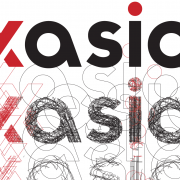 CrossAsia
CrossAsia
 SBB-PK
SBB-PK